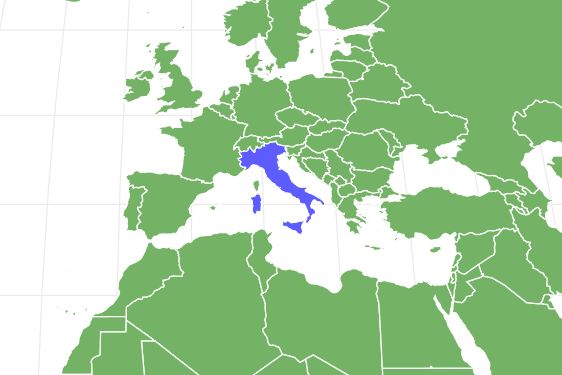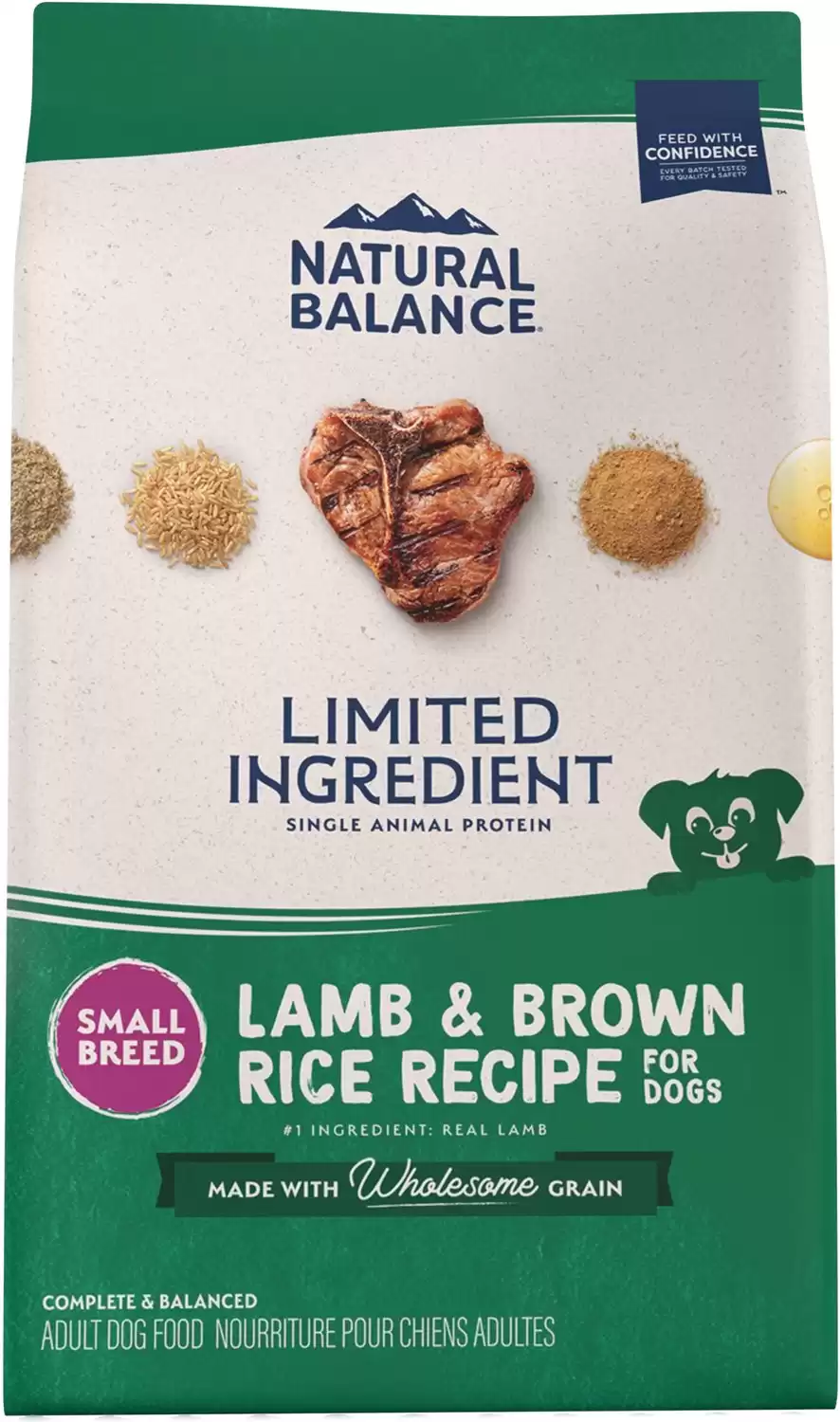Maltese
Canis lupus
Originally bred in Europe!
Advertisement
Maltese Scientific Classification
- Kingdom
- Animalia
- Phylum
- Chordata
- Class
- Mammalia
- Order
- Carnivora
- Family
- Canidae
- Genus
- Canis
- Scientific Name
- Canis lupus
Read our Complete Guide to Classification of Animals.
Maltese Conservation Status
Maltese Facts
Maltese as a Pet:
- General Health
- Energy Level
- Shedability
- Trainability
- Intelligence
- Tendency to Chew
- Size
- Family and kid friendliness
- Yappiness / Barking
- High
- Hypoallergenic
- Yes
- Separation Anxiety
- High
- Preferred Temperature
- Warm climate
- Exercise Needs
- Low
- Friendly With Other Dogs
- Moderate
- Pure bred cost to own
- $2,000 and $4,000
- Dog group
- Toy
- Male weight
- -7 lbs
- Female weight
- -7 lbs
This post may contain affiliate links to our partners like Chewy, Amazon, and others. Purchasing through these helps us further the A-Z Animals mission to educate about the world's species.
View all of the Maltese images!
While their name suggests that Maltese dogs are from Malta, most people believe they were originally from south-central Europe.
Maltese are a toy dog breed. They are hypoallergenic dogs with white hair. Maltese were most likely bred from Spitz type dogs. However, there is not a lot of written history about the origin of these dogs, so their past history is not completely clear.
See all of our expert product reviews.
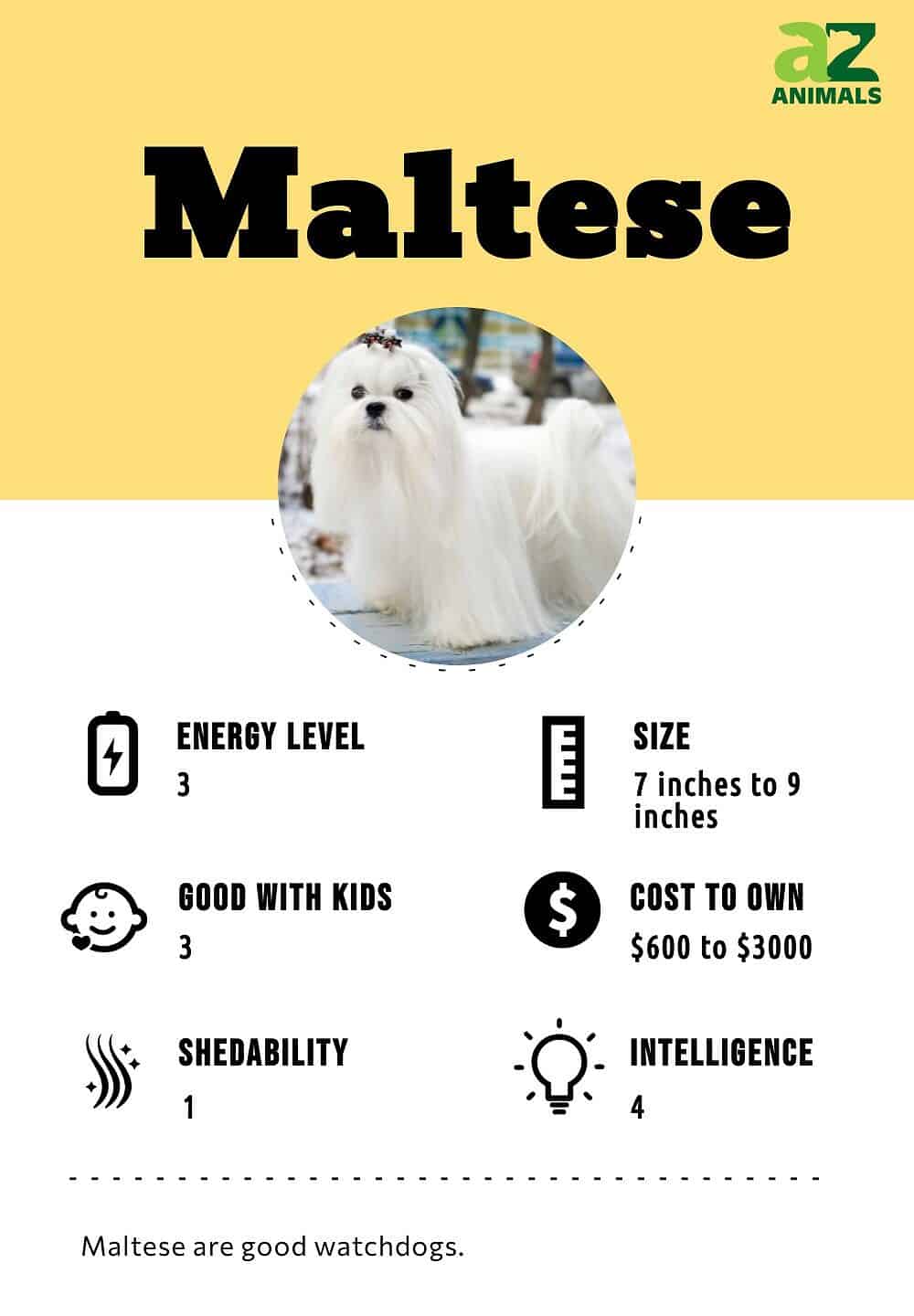
Breed History
While it is believed that Maltese dogs are from the island of Malta, their exact place of origin is a mystery. They have been found around the Mediterranean for thousands of years, including Sicily, Egypt, and Southern Europe but most historians do pinpoint Malta for the development of the breed.
Past writings about them indicate that numerous individuals from the ancient Greeks to the physician for Queen Elizabeth I believed that they were indeed from Malta.
Regardless of where they originated, these dogs are a very playful and gentle breed. They are friendly and can make great family pets for households with older children.
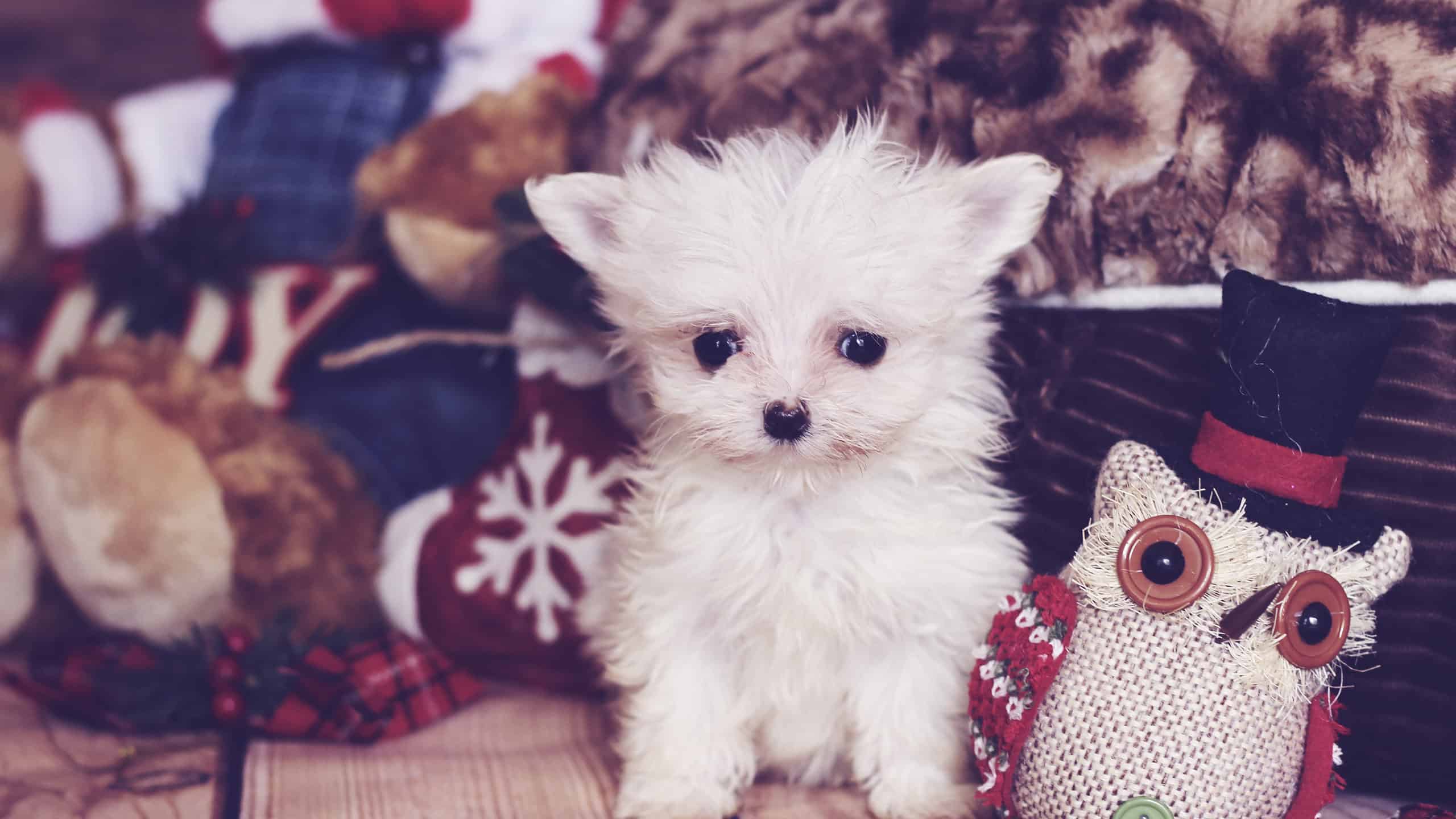
Teacup Maltese are among the smallest dogs in the world.
©Andi Berger/Shutterstock.com
Health and Entertainment for your Maltese
See all of our expert product reviews.
3 Pros and Cons of Owning a Maltese
| Pros! | Cons! |
|---|---|
| Hypoallergenic: Even though they have longer hair, Maltese are a hypoallergenic dog. This makes them a great choice for households with family members who suffer from allergies. | Not great for families with young children: They are very small and can be easily injured. They would not be a good choice for households with toddlers who haven’t learned how to appropriately interact with a dog. |
| Great companion dog: Maltese dogs were bred to be good companions. They are playful, gentle, and affectionate with their family members. With additional training, Maltese can also make great therapy dogs. | High maintenance: These dogs require daily brushing to keep their coats looking good and prevent them from getting matted. They also need regular baths and should have their nails trimmed frequently. |
| Overall healthy breed: In general, Maltese are a healthy breed. Buying a Maltese from a trusted breeder can help make sure your dog won’t be impacted by genetic disorders. | Can be destructive when left alone: Maltese dogs form a close bond with their owners. They do not do well when they are left alone and may become destructive or suffer from separation anxiety. |
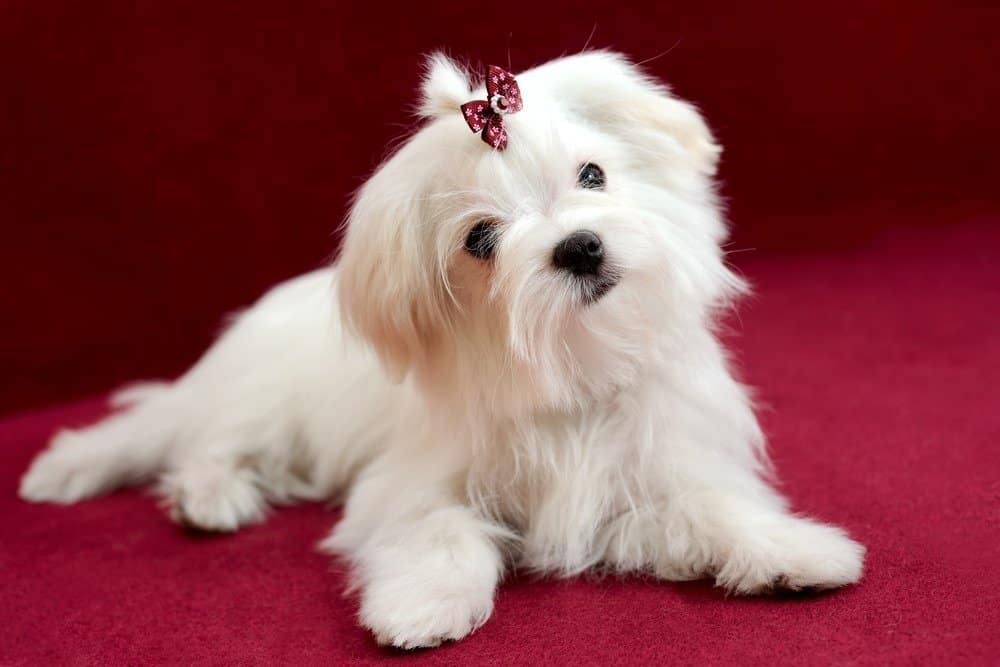
Maltese are agile, talented and trainable.
©Arthur Lookyanov/Shutterstock.com
Size and Weight
Maltese dogs are a toy-size dog breed. Both males and females are around the same size. They stand between 7 and 9 inches tall and weigh less than 7 pounds. Since this is such a small dog breed, the puppies are very small. They can weigh as little as ¼-pound at birth. By three months, puppies typically weigh between 2 and 4 pounds. By the time they are six months old, most puppies will be close to full-grown.
| Male | Female | |
|---|---|---|
| Height | 7 inches to 9 inches | 7 inches to 9 inches |
| Weight | Less than 7 pounds | Less than 7 pounds |
Common Health Issues
Being aware of some of the common health issues that these dogs may face can help you be prepared to provide the best level of care to your dog. One problem that is faced by some Maltese dogs is obesity. The body of a Maltese is not made to support a lot of extra weight, so obese dogs can have problems with their joints. They may also develop digestive or metabolic disorders, heart disease, or back pain associated with the extra weight gain.
Patent Ductus Arteriosis is a condition that these dogs have a genetic predisposition for. A vessel that carries blood between two different sections of the heart is not properly closed in dogs with this condition. With the vessel partly open, more blood is brought to the dog’s lungs than it should be. This causes fluids to build up and can put extra stress on their heart.
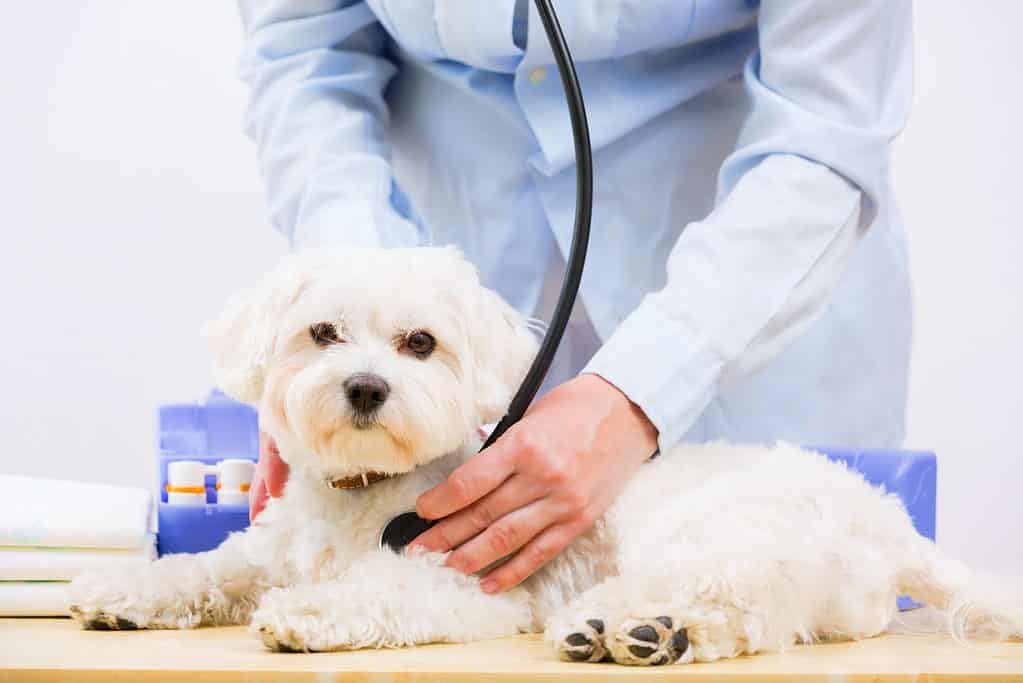
Maltese may have a few health concerns but will live well into the double digits.
©gorillaimages/Shutterstock.com
Maltese dogs may also develop a liver disorder called portosystemic shunt (PSS). This disorder caused some of the blood meant for the liver to go around it. With this reduced blood flow, the liver is not able to grow as it should and does not function properly. Livers in dogs with PSS are not able to remove toxins from the blood like a normally functioning liver would.
In summary, here are some of the common health issues that Maltese dogs may face:
- Obesity (which can lead to joint problems, metabolic and digestive disorders, heart disease, or back pain)
- Patent Ductus Arteriosis
- Portosystemic shunt (PSS)
Temperament
These dogs have very friendly personalities. They are gentle and loving; a Maltese will be very happy to curl up on the lap of its owner. These traits will become much more reserved when the Maltese is around a person they do not know.
In addition to the behaviors above, Maltese can also be very active. They enjoy running around and going for walks. They often seem to forget how small they are and will bark at or try to challenge another dog.
How to Take Care of a Maltese
Every dog is unique, and Maltese are no exception. Caring for these dogs will look different from caring for other breeds. Being informed about the health concerns, nutritional needs, and other unique aspects of this breed will allow you to keep your dog happy and healthy.
The Best Dog Food for Maltese Dogs
Since Maltese dogs can have problems with obesity, it will be important to make sure you are feeding your dog the proper amount of food. For both adult and puppy dogs, you’ll want to choose a high-quality food from a trusted manufacturer. Another option when feeding your dog is to offer home-prepared meals. Whichever option you choose, you’ll want to consult with your veterinarian to make sure the food you are feeding your dog is meeting their nutritional needs.
This breed can deal with multiple heart issues, Patent Ductus Arteriosis and Portosystemic shunt. So watch out for legumes such as lentils and peas in the ingredients of dog food, and stay away, since legumes have been linked to heart failure in dogs.
A-Z Animals feels the best dog food for Maltese dogs is .

Make sure your Maltese avoids certain foods like grapes, which are toxic.
©iStock.com/humonia
Your Maltese’s delicate heart will be happy to get ample taurine instead of concerning legumes. Because this food is made of high-quality, natural ingredients like chicken and lamb instead of artificial preservatives and empty calorie fillers, your dog will feel full and less likely to overeat. Plus, the amino acids promote building lean muscle during exercise for an active lifestyle and healthy weight.
Try out Natural Balance Limited Ingredient Small-Breed Diet on Amazon and Chewy.
- Specially formulated for small breed dogs
- Maintains digestive health, skin, and coat health
- Contains natural ingredients like chicken and lamb
- Produced in the USA
Every dog is different and may require a different quantity of food. Your dog’s activity level, age, and other health concerns can impact the amount of food they should be eating. In general, adult dogs should eat somewhere between ¼ and ¾ cup of food each day. This food should be divided into two or three meals.
When they are first born, the puppies can be free-fed. This means you can leave food out so they can eat when they want. By the time the puppy is about 12 weeks, you should stop free-feeding them so they don’t overeat. 12-week to 9-month old puppies should eat three smaller meals each day. Once your dog is an adult, you can switch to feeding them two meals a day, or you may decide to stick to three meals. Have a look at the Best Food for Maltese that we compiled, to find out what is the best food for every stage of the dog’s life.
Maintenance and Grooming
While Maltese do not shed very much, they are still a pretty high-maintenance dog. To keep their coat looking nice and prevent it from getting tangled, you will need to brush your dog every day. It will also be important to bathe them regularly, condition their hair, and blow them dry. Their nails should be trimmed and their ears should be checked and cleaned regularly as well.
In addition to the grooming items listed above, you will also want to brush your dog’s teeth at least once a day. This will help protect them from developing dental diseases.
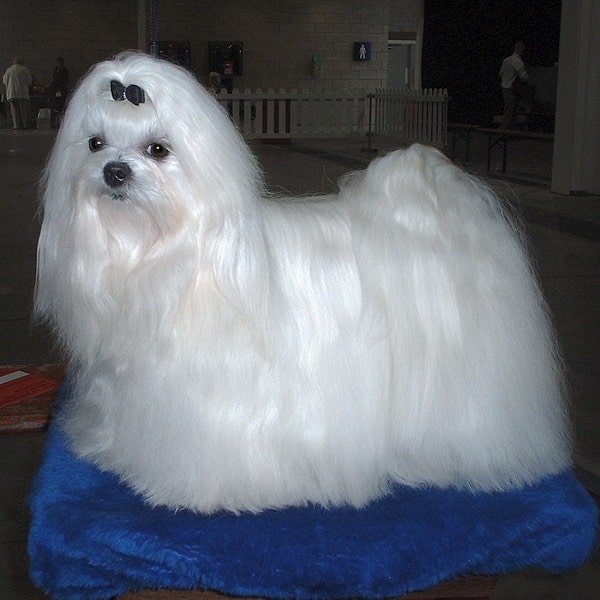
Regular grooming will keep your Maltese well maintained.
©Sannse, CC BY-SA 3.0, via Wikimedia Commons – License
Training
Training your Maltese dog will take a little bit of work. Over the years, they have learned ways to get what they want from their owners. However, if you start training your Maltese from an early age, are consistent, and use positive training methods, you should notice that your dog begins to comply with your requests.
Maltese are very intelligent dogs, which means they are capable of learning more complex commands. They also make good show dogs and can excel in agility or obedience competitions.
Exercise
Unlike other breeds that need lots of exercise each day, Maltese dogs do well with minimal exercise. They are a relatively high-energy dog, but will meet their exercise requirements by taking a short walk or playing in a fenced-in yard.
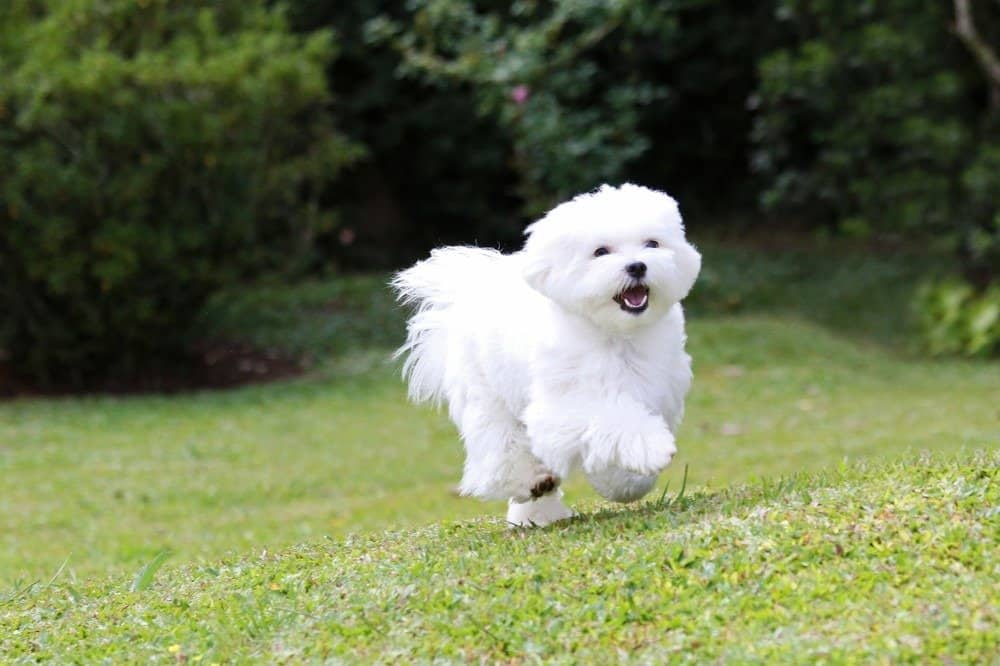
Maltese do well with minimal exercise but should still be walked daily.
©Kimrawicz/Shutterstock.com
Puppies
Maltese puppies will sleep between 18 and 20 hours each day. As they get a little older, the amount of sleep they need will decrease to between 12 and 14 hours. However, when they are awake, puppies will be very energetic. They can act hyper and may run all around your house. Puppies will begin to calm down around the age of 6 months and will be significantly calmer by the time they are between 9 and 12 months.
Before you bring home a new Maltese puppy, you’ll want to take a few steps to make sure your home is ready. Make sure you have purchased food, a harness and leash, a crate, toys, and all the other supplies you’ll need for your new dog. You will also want to make sure your home is puppy-proofed. Remove any items that could be hazardous to the dog or that you wouldn’t want to see destroyed by a puppy. Choosing a veterinarian before bringing home your new dog is also a good idea.
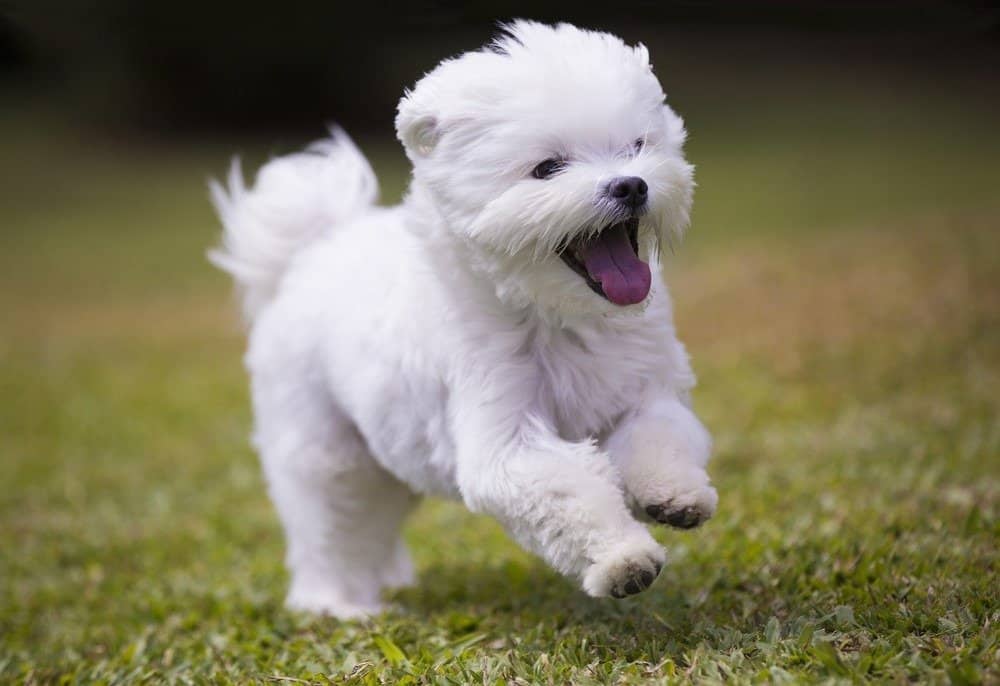
©Kimrawicz/Shutterstock.com
Maltese Dogs and Children
Maltese dogs are gentle and loving. They can be a great addition to a family with older children. However, it is typically not recommended to bring home a Maltese if you have babies or toddlers in the home. Maltese dogs are so small and can easily be injured by young children who have not yet learned how to treat a dog.
Even older children should always be supervised around a Maltese. This will help prevent accidental injuries to either the child or the dog.
Dogs similar to Maltese
Shih Tzus, American Eskimo Dogs, and Bichon Frises are three dog breeds that share some characteristics with Maltese dogs.
- Shih Tzu: Like Maltese Dogs, Shih Tzus are also a toy breed. Both breeds are also hypoallergenic. Shih Tzus are larger than Maltese dogs are. They typically weigh between 9 and 16 pounds, while a Maltese will weigh closer to 7 pounds. Maltese have white hair and Shih Tzus have red, black, brindle, liver, or silver-colored hair.
- American Eskimo Dog: American Eskimo dogs are closely related to the German Spitz breed. Maltese are believed to share common ancestry with spitz dogs; they have a similar point muzzle. Both dogs have white hair, and the toy-sized American Eskimo Dogs are comparably sized with a Maltese. American Eskimo dogs shed quite a bit, while Maltese dogs hardly shed at all. American Eskimo Dogs are typically more playful than Maltese dogs are.
- Bichon Frise: Bichon Frises are another dog breed that is small with white hair like the Maltese. Bichon Frises are hypoallergenic as well. Both breeds are very affectionate and can be more sensitive than other dog breeds. Maltese dogs are more territorial and more likely to bark than Bichon Frises.
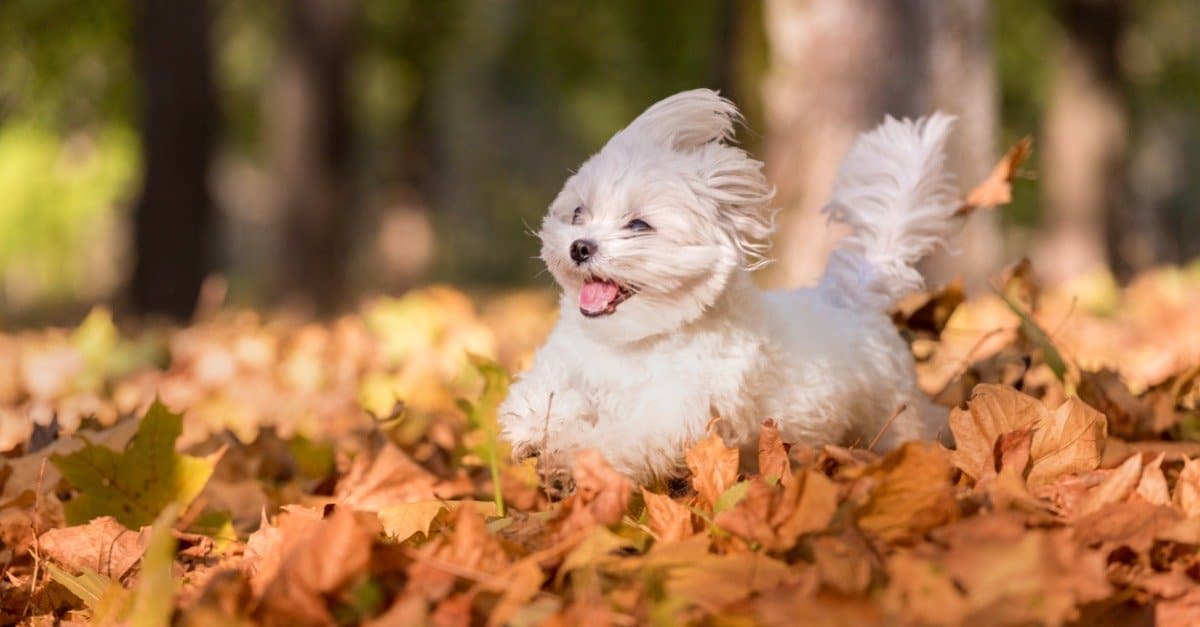
The Maltese has silky, elegant fur.
©iStock.com/Mindaugas Dulinskas
Famous Maltese Dogs
There have been a number of famous people who have owned Maltese Dogs over the years.
- Sugar was Elizabeth Taylor’s Maltese Terrier that went everywhere with her.
- Maf, short for Mafia, was Marilyn Monroe’s Maltese. Maf was gifted to her by Frank Sinatra.
- Happy was Tony Bennet’s Maltese dog.
Popular Names for Maltese
Below are a few names you could consider using for your Maltese dog.
- Coco
- Tory
- Einstein
- Fiona
- Ellie
- Oliver
- Winston
- Margie
- Toto
- Benny
Up Next
- Teacup Maltese
- Maltese Lifespan: How Long Do Maltese Live?
- Havanese vs Maltese: What’s the Difference?
Maltese FAQs (Frequently Asked Questions)
How long do Maltese live?
Maltese are a smaller dog breed and tend to live longer than other dogs. On average, Maltese have a lifespan that ranges from 12 to 15 years. There are reports of Maltese reaching more than 18 years of age, but there’s no documented history of the oldest Maltese dog.
How much does Maltese cost to own?
The cost of purchasing a Maltese from a breeder can vary quite a bit. While you may be able to find some dogs that cost as little as $600, it is also possible to find some that cost thousands of dollars (even up to $10,000). On average, a Maltese will cost between $2,000 and $4,000 when purchased from a breeder. Factors including their health and pedigree can impact the cost. Adopting a Maltese from a shelter will be significantly less and will likely only cost a few hundred dollars.
You will also need to pay for supplies, vaccinations, veterinary appointments, training, food, and other supplies and necessities for your dog. The first year you own your Maltese, this could cost you somewhere between $1,500 and $3,000. After the first year of ownership, you should still budget between $1,000 and 2,000 to care for your pup.
Are Maltese dogs good with kids?
Yes, Maltese dogs are generally good with kids. This breed is very gentle and loving. However, they are not an ideal breed for younger children and toddlers who don’t yet know how to carefully handle and interact with a dog. Maltese can be easily injured by children who may grab or pull on them, so for this reason you may want to wait to get a Maltese if you have babies or toddlers in your home.
How long do Maltese dogs live?
The average life expectancy for a Maltese is between 12 and 15 years.
Do Maltese dogs bark a lot?
Yes, Maltese dogs may bark a lot. They sometimes become protective and intolerant around young children, which can cause them to bark. Additionally, they may bark at other dogs when they are out on a walk or if they see them near their home. Maltese dogs also do not like being left alone and can become disruptive or bark a lot when their owner is away.
Do Maltese dogs shed?
No, Maltese dogs do not shed very much. This is because they do not have an undercoat like many other breeds do.
How big do Maltese dogs get?
Maltese dogs are a toy-sized breed and, thus, are very small. Most Maltese dogs weigh less than 7 pounds. They are typically only 7 to 9 inches tall.
Are Maltese dogs herbivores, carnivores, or omnivores?
Maltese dogs are Omnivores, meaning they eat both plants and other animals.
What Kingdom do Maltese dogs belong to?
Maltese dogs belong to the Kingdom Animalia.
What class do Maltese belong to?
Maltese belong to the class Mammalia.
What phylum to Maltese belong to?
Maltese belong to the phylum Chordata.
What family do Maltese belong to?
Maltese belong to the family Canidae.
What order do Maltese belong to?
Maltese belong to the order Carnivora.
What type of covering do Maltese have?
Maltese are covered in Hair.
What genus do Maltese belong to?
Maltese belong to the genus Canis.
What is an interesting fact about Maltese?
Maltese were originally bred in Europe!
What is the scientific name for the Maltese?
The scientific name for the Maltese is Canis lupus.
What's the difference between Maltese and Maltipoos?
Maltipoos are a hybrid dog made from Maltese dogs and poodles. Read all about their differences here!
What's the difference between a Maltese and a Yorkie?
Maltese dogs come in fewer colors than the Yorkie. Additionally, the Maltese is an ancient dog breed, while the Yorkie originated in the 19th century.
What's the difference between a Maltese and a Coton De Tulear?
The Maltese is smaller than the Coton De Tulear, in both height and weight. Additionally, the Coton De Tulear comes in more colors compared to the all white Maltese.
Thank you for reading! Have some feedback for us? Contact the AZ Animals editorial team.
Sources
- David Burnie, Dorling Kindersley (2011) Animal, The Definitive Visual Guide To The World's Wildlife
- Tom Jackson, Lorenz Books (2007) The World Encyclopedia Of Animals
- David Burnie, Kingfisher (2011) The Kingfisher Animal Encyclopedia
- David Burnie, Dorling Kindersley (2008) Illustrated Encyclopedia Of Animals
- Dorling Kindersley (2006) Dorling Kindersley Encyclopedia Of Animals
- American Kennel Club, Available here: https://www.akc.org/dog-breeds/maltese/
- Wikipedia, Available here: https://en.wikipedia.org/wiki/Maltese_(dog)
- Pet Maltese, Available here: https://www.petmaltese.com/maltese-puppy-growth-chart
- Dog Zone, Available here: https://www.dogzone.com/breeds/maltese/
- Nylabone, Available here: https://www.nylabone.com/dog101/maltese#:~:text=Origin%20and%20History,the%20development%20of%20the%20breed.

